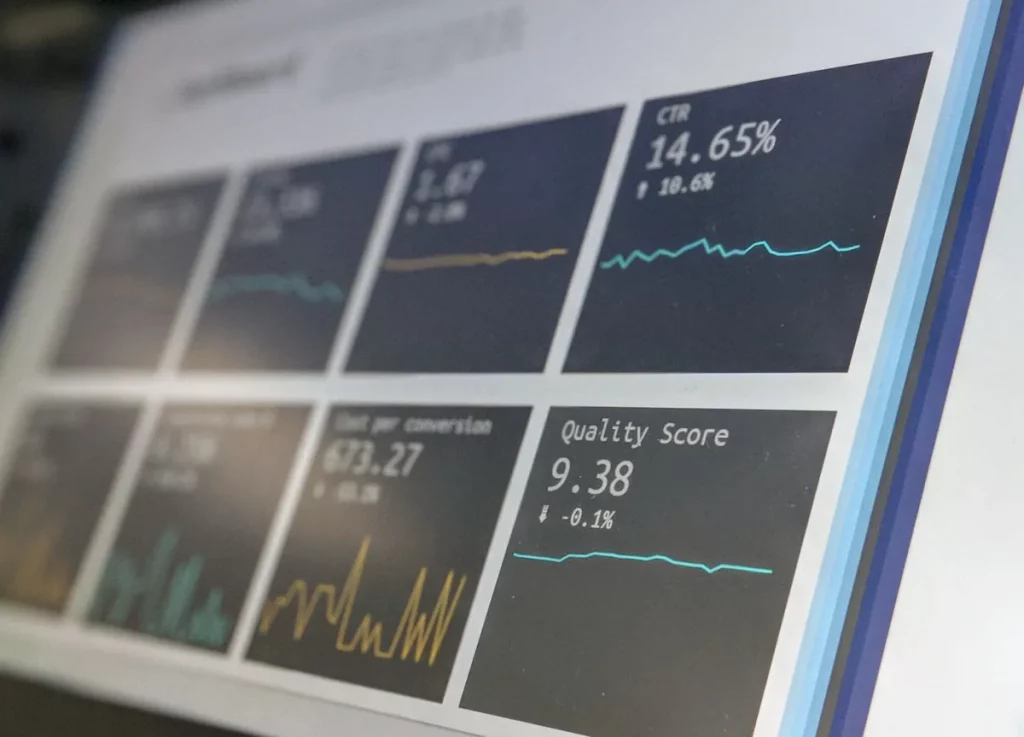In recent years, when everything is moving toward digital systems, the finance sector has also been making significant strides toward digitalization with the help of data analytics in order to make the most of the data they collect. Digitalization is necessary. Not only does it diminish the chances of human errors, but it has also transformed the way people make business-related decisions now.
Through the course of this article, we will discuss how data analytics has become a crucial part of the finance industry and why with the help of some examples.
Here is what you will be learning in the article today:
- What is data analysis, and how has it revolutionized the finance sector of industries
- What makes financial analytics so important
- Types of financial analytics, followed by some of its examples
- The role of a finance analyst
So, let’s get right into it!
Why Data Analysis?
Data analysis is a subset of data analytics. Nowadays, by means of different Data Analysis (DA) software, companies are able to sift through heaps of data to collect valuable insights and identify trends, consequently helping them make better critical business decisions. This is done through data processing, i.e., cleaning, reorganizing, summarizing, understanding, and finally deriving conclusions from the data.
You might be wondering what this has to do with the finance sector. Well, if you have been keeping up with the news, you might be aware of the surge in digital fraud activities, especially in the year 2020. Well, nowadays, thanks to the advancements in the technological sector in finance due to data analytics, the financial analytics teams can work together and evaluate data to ensure that these accidents do not happen again by carefully evaluating the available data. Not only that, but these advancements have allowed companies to keep track of several Key Performance Indicators (KPIs).
There has been a hike in the use of technologies in all different sectors, as well as an increase in the amount of Big Data shaping up as a result of aggressive data collection. Financial analysts can integrate various Machine Learning (ML) and Data Science tools with this to achieve even more precision in their results and make this technology more reliable when it comes to making important decisions.
What Makes Financial Analytics So Important?
Data analysis has helped people understand the importance of raw data and helped them figure out ways to use that data for the benefit of their company. Similarly, the finance industry has also benefitted because now, they can track criminal activities to keep their data safe and predict trends in the market. Let us discuss in detail the benefits data analytics brings to the finance industry and what upgrades can be added to this system in the near future.
To start off, we need to know what a good financial analytics system looks like.
A reasonably good financial analytics system should be:
- Interactive – Easy to understand and digest by other teams in the company, even if they’re non-technical.
- Flexible – Can be conveniently edited whenever required and updated according to the latest trends. This is very important to avoid making reports and stuff over and over again.
- Dependable – The system should provide all the necessary insights with accuracy to avoid any losses in the future. Lacking integrity could be a complete deal-breaker.
- Have Room for Growth – Considering how the world of technology is expanding, a sound system should always have room for new additions to its design.
Now let us look at how this system benefits us:
- Allows you to plan and forecast business decisions. When you already know the possible outcomes of your business decisions, it will enable you to give a clearer image of your company’s future goals according to what works best for your company. You get a chance to look at your business from a unique perspective that may give birth to newer and better business strategies, and that too in a timely manner.
- Helps a company identify its position financially – When a company is fully aware of its financial situation, it gets easier to manage its resources since they’re mindful of the weaknesses and therefore can plan better, giving them the upper hand.
- Improves risk management – When you forecast your customers’ reactions to your business decisions, you know beforehand what sort of decisions will benefit you and which will not, saving you from the risk. In addition, it also provides suggestions about what you can do to improve your company’s current situation.
- Gives you better control over your financial assets. Before this system, people depended upon old information to make decisions for the company’s future, which was too unreliable. Still, financial analytics allows you to plan and forecast future financial scenarios based on the latest trends protecting you from any sort of loss. This gives you more control over your resources because you can see where your money is going (transparency) and stop spending money on sectors that are not profitable.
- Allows you to increase the company’s cash flow – When you start making more intelligent and more profitable financial decisions with the help of financial analytics, the cash inflow of your company will also increase.
Keeping the current benefits in mind, many people often wonder what they should be expecting in the future of financial analytics. As the field of data science grows, so will the number of tools and software that can be used in financial analytics, opening doors to endless opportunities for jobs and development in this industry. More development in this field would also speed up a financial analyst’s work.
Types of Financial Analysis
Let’s briefly go through some of the most common types of financial analysis so you can get a quick grasp of it.
1. Horizontal Analysis:
This type of analysis is preferred when you need to detect substantial data changes over time. This also happens to be a side-by-side analysis.
2. Vertical Analysis:
This type of analysis involves a base value and a line value where the line value is presented in the form of a percentage of the base value.
3. Growth Rate Analysis:
In order to do a growth rate analysis, you need to first subtract the initial value from the analysis’s final value, after which you need to divide it again by the initial value.
4. Multi-Company Comparison:
This type of analysis involves financial data from two different companies from the same industrial sector. Both datasets are then compared to one another to identify the areas needing improvement.
5. Liquidity Analysis:
This is the measure of the time you need to convert your company’s resources into money, and you can do so by dividing the resources available by the liabilities.
6. Trend Analysis:
As the name suggests, this is the process of predicting future trends based upon the current trends by observing different patterns.
-

How Business Analytics works in Finance
-

The Importance of Data Analysis in Research
-

The 5 Methods of Collecting Data Explained
5 Examples of Financial Analytics
In this section, we will go through the top 5 examples of financial analytics and how it’s being used in the market today.
1. Return Rate Analysis
This type of analysis refers to comparing the return rate of a new product to the money invested in that product. Before launching a new product, companies analyze the profits expected from its launch to see if it is worth the investment. After some time, the expected value of the return rate is compared with the actual profit made. If it does not meet expectations, the required changes could be made to that product in order to achieve the initial goal.
2. Financial Statement Analysis
In order to keep an account of a company’s financial position and its value, a financial statement analysis is conducted. To successfully conduct a financial statement analysis and gain reliable insights from your business, you need first to provide all of the relevant finance documents (this includes the balance sheets and income statements). After the accuracy of the data provided is confirmed, the data is analyzed with the help of different financial analysis techniques – vertical analysis, horizontal analysis, liquidity ratios, etc.
3. Sales to Working Capital Analysis
This analysis tells you if the company can cover all of the finances to carry out all ongoing activities in the company. For this, you need to know the amount of the working capital because if you have a sufficient amount of working capital, only then will your company be able to generate sales. The way you utilize your working capital also determines the number of sales that your company generates over a period of time.
4. Market Trend Analysis
If you’ve noticed a drop in the sales of any of your company’s products, you need to first look at the factors that might have caused it. This is where the trend analysis method comes into hand. With the help of multiple line graphs, a trend analysis tells us what caused the decline and if those causes will keep affecting your product sales in the future or not and allows you to develop a strategy to reverse the decline. In a different case, you could also check the trends of similar products before launching your own to see if the launch would be fruitful or not.
5. Net Profit Margin
The method used to calculate the net profit margin is the financial ratio analysis. To calculate the net profit margin, you need to first obtain the company’s net income and compare it to the profit it earns. This comparison test shows you how much better your company is doing than your competitors. If you have noticed a series of losses, you should be worried and plan strategies to overcome those losses. Comparison with another company also allows you to identify your company’s shortcomings.
What is the Job of a Finance Data Analyst?
Regardless of all of the advancements that have been made in the finance sector due to data analytics, there still seems to be a shortage of data analytics experts in the industry. Here we will be listing a few requirements that can be found in an excellent financial analyst.
Basically, what a financial analyst has to do is analyze all of the financial data of a company and turn the collected insights into an interactive report with the help of data visualizations. These reports can then be presented to other teams in the company for approval. Along with that, a financial analyst also gives precautionary measures that the company can take.
Here is a list of a few financial analytics tools and packages a financial analyst must be familiar with:
- Oracle
- SAS
- MATLAB
- Python
- MS Excel
Apart from the tools listed above, a financial analyst should have a deep understanding of skills related to:
- Big Data Analytics
- Predictive Analytics
- Data Mining
- Artificial Intelligence.
Key Takeaways
Financial analytics is a part of business intelligence and enterprise performance management; this means that it provides the company with all the details they need about its current financial performance, along with predicted trends. This enables the management to make intelligent financial decisions in the future and forecast customer reactions. This may sound simple, but a lot of data and technical resources go into this process for the sake of fruitful results. Currently, many companies are warming up to this idea, given the control it gives the company over its financial resources.
Today’s software can go through not only structured but unstructured data as well, turning it into an integral part of the digital finance world and making room for more advancements in fields like data science and automation.
That’s it for today. Hope you enjoyed reading the article!


